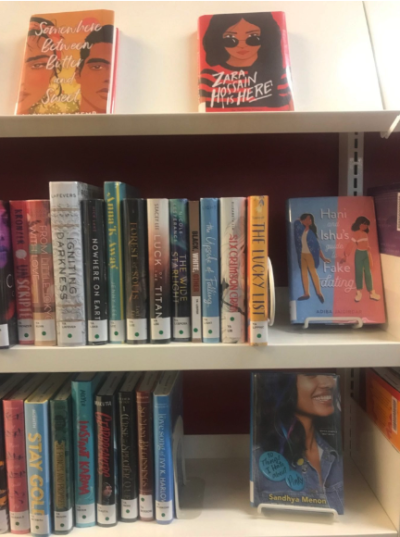
“Literature transforms human experience and reflects it back to us, and in that reflection we can see our own lives and experiences as part of a larger human experience. Reading, then, becomes a means of self-affirmation, and readers often seek their mirrors in books.”
― Rudine Sims Bishop
For the last three years, librarians have been diving into data to analyze and improve the diversity of books in the Cedar Rapids Public Library collection.
Community Engagement Librarian Sarah Voels was a materials librarian when she undertook the project, working with Librarian Molly Garrett. They started in the summer of 2018, focusing on the Young Adult fiction collection. They assessed 20% of books in the collection, chosen at random. Each book was physically pulled from the shelf and searched for representation across six categories – race and ethnicity, LGBTQ, mental health, physical health, religion, and economic welfare.
They found just over 15% of the collection featured representation in one of those categories. That didn’t reflect the Cedar Rapids community, based on data they had that 37% of Cedar Rapids Community School District students were not white. Diversity in the other categories was harder to quantify, but they knew if they wanted the collection to reflect the community of teens reading it, they had work to do.
They decided to see if, with directed effort, they could increase that number. Voels was in charge of purchasing new YA fiction for the collection, and she devoted half of her budget to purchasing representative books.
“I was trying to make sure I was putting my money where my values were in collection development,” she said.
The next summer, they surveyed the YA collection again. With the help of seasonal staff, they audited every book on the shelves in one week, which was 54% of the collection.
The number of diverse books had increased to 25%. They planned to do a third audit in 2020.
Then COVID-19 happened. While working from home, Voels undertook an digital audit of 100% of the YA fiction collection, using subject headings in the catalogue. That analysis finished in 2021, and found the collection diversity had increased to 35% even as the Library shifted more purchasing dollars to digital materials instead of physical in response to the pandemic and the purchasing industry overall slowed down.
There are also systemic challenges to increasing diversity in the collection. Voels said even if she purchased every representative book published in a year, it wouldn’t be enough to overcome the disparities.
“It’s a publishing-wide issue. Diverse stories are simply not being published at a fast enough rate to turn the tide of the last 100 years of publishing history,” she said.
Still, Voels would like to see the collection hit 50% diverse books, an effort that will take continued intentionality in purchasing.
“It’s important, because we live in an increasingly diverse community,” she said. “You want to have a collection and a library that reflects your community.”